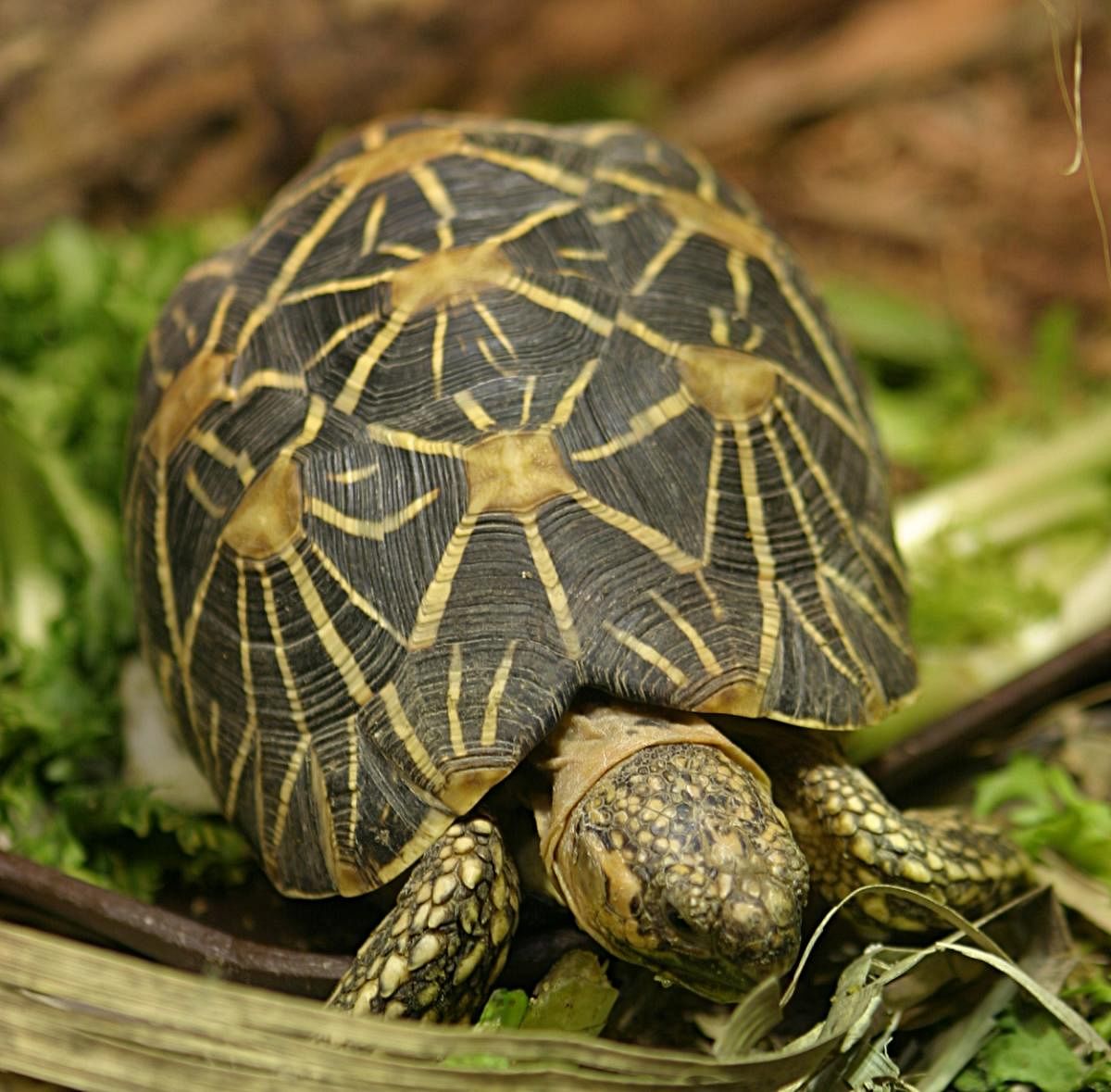
Two years ago, enforcement agencies in Singapore seized a consignment of live Indian star tortoises (Geochelone elegans) on a flight that landed from Bengaluru.
As an alien species in the island nation, their release in Singapore was out of the question, and they were transferred to a Singapore-based rescue facility — Animal Concerns Research and Education Society (ACRES).
Investigation reports strongly indicated Karnataka as their origin.
In 2017, a spot inspection of the star tortoises was conducted by the then Chief Wildlife Warden of Karnataka, Anur Reddy, and CEO of Wildlife SOS, an NGO working in India, Kartick Satyanarain.
While the paperwork and permits were being put together, the tortoises continued to be cared for at the ACRES.
They recovered from their traumatic ordeal as they were provided intensive veterinary care and healthy environmental conditions to keep fit throughout their journey back home.
Working closely with the Karnataka Forest Department and other government agencies and departments, the Wildlife SOS and ACRES facilitated procurement of all the necessary paperwork and clearances required to enable a unique repatriation mission of bringing 51 Indian star tortoises back home to their natural habitat in Karnataka...
Indian star tortoises are found in the forest areas closer to villages in Andhra Pradesh, Bihar, Delhi, Gujarat, Karnataka, Kerala, Madhya Pradesh, Maharashtra, Odisha, Tamil Nadu, Uttar Pradesh and West Bengal.
No mercy
They are collected by villagers illegally and sold to middlemen, who then pass them on to organised traffickers, who get them out of the country, especially to Thailand, Malaysia, Taiwan and other wildlife trade hubs.
The reptile is packed in gunny sacks and smuggled in boxes hidden under food items like vegetable or fish.
Smuggling the young ones is more prevalent as it is easier to transport them. This is quite worrying as it could lead to a population collapse once the adults die.
The body parts of these reptiles are also sold illegally due to their supposed aphrodisiacal properties and use in traditional medicine. The star tortoise is Schedule IV species under the Wildlife (Protection) Act, 1972 — that means it’s illegal to keep them as pets or trade them commercially.
Also, it is CITES Appendix II species; meaning that it is not threatened with extinction, but its trade must be controlled in order to avoid utilisation incompatible with their survival.
With over 25,000 being seized at Indian airports every year, and an unimaginable number going out of the country and into illegal pet-trade, it comes as no surprise that the Indian star tortoise is one of the most trafficked tortoise species in the world.
This small reptile has a scaly, almost spiny body, protected by a distinctively patterned hard-curved shell like a bumpy star-studded helmet.
Their calm demeanour and slow movements make them apt for ‘exotic pet trade’ and easy to poach and move across international borders.
Poaching occurs most commonly in monsoon. So long as temperatures remain cool, these cold-blooded reptiles show little movement — making them hard to detect. The tortoises end up in Southeast Asian markets as exotic pets in people’s homes, as symbols of good luck and spiritual upliftment, as food delicacy in restaurants, and even their body parts are put to use in traditional medicine.
During the transit in packed sacks and boxes, the mortality is as high as one in three. Respiratory infections are common in captive star tortoises, caused as a result of unsanitary conditions or insufficient humidity.
They are susceptible to metabolic bone disease, which occurs when the animal falls short of the balance of calcium and phosphorous.
They need exposure to ultraviolet (UV) radiation A and B to be able to absorb calcium. Tortoises in the wild typically bask in the sun for most of their waking hours to get this level of UV A/B exposure.
In captivity
For those that do survive the journey — many die in the cramped, traumatic conditions of being smuggled as contraband, — dehydration, malnutrition, suffocation and stress prove too much.
Little is known about how to best care for and feed Indian star tortoises, particularly about their diet.
Owners often feed them supermarket-bought vegetables, which do not come with the calcium and the vitamins required to keep their shells healthy, leading to death.
Star tortoises in captivity are known to demonstrate extreme pyramiding leading to structural deformities, reducing the ability of a male tortoise to mount the female, thereby hindering reproduction.
Happy ending...
Back in Singapore, the airlines contributed to the cause of wildlife conservation by transporting the tortoises for free. The micro-chipped tortoises were sent back in specially designed crates with ventilation holes for the long plane journey in November 2018.
All 51 tortoises brought back from Singapore were quarantined for a period of three months in Bannerghatta National Park, followed by soft release in a forest area in Koppal district after tagging them with radio transmitters.
This was to study their movement ecology and survival.
This landmark project not only helps augment the endangered populations in India, but also demonstrates that the state and central governments have zero tolerance towards illegal wildlife trade.